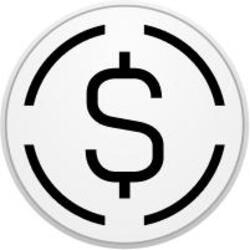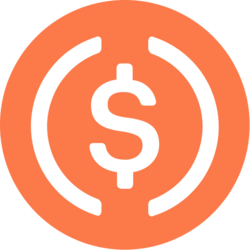Why is it so hard to make money in the market? As we pass the midpoint of the second month of the year, it’s incredibly important that we tackle this question using two classic examples. I’m talking about two of the best stocks of all time: Nvidia and Apple . Why these two? I’ll tell you. Since the year began, these stocks have been pummeled. Nvidia fell all the way from its all-time high close of $149.43 per share on Jan. 6 to $116.66 on Feb. 3 — a crushing loss of roughly 22%. Apple plummeted from its record close of $259 on Dec. 26 to $222.64 on Jan. 21 — a bruising drop of more than 14%. What caused these horrendous declines? For Apple, it was the usual suspects: a slowdown in China plus the potential punitive action against a company that is one of the biggest employers in China, a country desperate for job growth. For Nvidia, it was claims by DeepSeek, a Chinese startup, that it had beaten Nvidia at its own game, creating an inexpensive process — do we really know enough to call it a process? — that begged the question of whether all that expensive hardware from the $3 trillion American company was outmoded. Both were real body blows. The first was because Apple reported a very nice quarter, a good top- and bottom-line beat, and gave a strong forecast. With the withering negatives swirling around, nobody cared. The second was because Nvidia has been viewed as an accident waiting to happen ever since it crossed the $500 billion market cap threshold three years ago. Now, that accident had occurred. Many people are sitting on huge profits in these two stocks. They have them because they have been patient and let them run. They have, for lack of a better set of terms, “owned them and not traded them.” That’s been my watchwords for both: “Own don’t, trade” Apple and Nvidia. I came up with those terms not so much for you, the Club members, but for me. There has been incessant trading in these two companies for years now — all, in retrospect, for naught. So, I looked back at all the research on these for multiple years, paying attention to the downgrades and I concluded that getting out and then back in — at or near the top and bottom — is nearly impossible. I spent hours upon hours upon hours examining these two companies. I am a generalist, and there will always people who know these two better than I do. But I realized that as good as these “talking heads” were — and here I am speaking of analysts and managers who come on television — they got it wrong empirically every time they downgraded these two stocks, and they have been repeatedly downgraded. So, I came up with that “own don’t, trade” rule that made me stay long. Why? Because of so many reasons. AAPL 3M mountain Apple 3 months Apple? The best products ever made, one of the most able CEOs I’ve ever met, the lack of really good competition, constant innovation — even if it didn’t beat you over your head with brand-spanking-new gizmos and bells — and a constant, growing service revenue stream that first might have been backed into but now represents the best source of growth. Now there are three forces against Apple. One, it’s the unusually high stock price-to-forward earnings multiple of 33 times when we are used to nothing that much north of 22. Two, it’s the lack of growth in the flagship handset model. And three, it’s the incessant drumbeat of China dropping off the face of the Earth either naturally because Apple charges too much or artificially because the Chinese government has to make a point even if it spites its own people. Unlike in most endeavors each one of these negatives has its champions — vociferous champions I might add. They use various tools to make their case. They use questionable sources to tell you about light or declining orders for parts even as Apple does everything it can to disguise who had the orders. They quote unknown Chinese workers and officials about nonexistent crackdowns. They talk about a lack of innovation, yet do you ever see that many people with an Android-based system? You try to purge them from any group chat because they really screw it up. We think they are nuts, except on Wall Street that is. These are constants — and unless you, too, held to “own, don’t trade,” you’d most surely be shaken out. They — the bear-journalist-short-seller-analyst community —want you out. They want these stocks lower. It’s exciting. It’s lucrative. And investors make easy targets. NVDA 3M mountain Nvidia 3 months Nvidia? Before DeepSeek, we would have to be deluged with warnings about late products, a legacy of an underestimation of the difficulty of manufacturing the new Blackwell chips. We were warned that the hyperscalers — those huge tech companies that couldn’t even buy enough Nvidia chips — could not continue to spend like drunken sailors. They would live to regret it. We said that these “damn fool” clients would one day realize that they spent too much money on AI. Then all of a sudden, we got the real silver bullet right to the heart: a company in China we didn’t know anything about says it has come up with something that made you feel that the hyperscalers were idiots if they kept spending hand-over-fist on Nvidia’s wares. The timing of the whole thing threw us. It came during the quiet period so Nvidia founder and CEO Jensen Huang felt legally bound not to be able to put things in context. Things are also so charged between China and the United States that it truly felt like a “Sputnik moment” when the Soviets fired up a satellite on Oct. 4, 1957, something that triggered a panic in the U.S., because we realized that we were well behind the Russians. Of course, we caught up but only after a panic so horrendous that even this little boy grew afraid back then. Sound familiar? I know I was concerned in that first week of DeepSeek turmoil. We were in an earnings period for the hyperscalers and we needed to go four for four, meaning we needed to hear that Club names Microsoft , Alphabet , Meta Platforms , and Amazon weren’t going to cut back capital expenditures, which are budgeted numbers that they would go over on their quarterly calls. Each company would have to reaffirm their spending programs or else we knew they were rattled by DeepSeek. As each one affirmed robust spending plans, nothing happened. Nothing. No one dared buy Nvidia until all four weighed in, and it was only after Amazon checked off on a monster capital expenditure number that Nvidia began it rally. It’s almost all the way back. In retrospect, it all seems so silly. How did we talk ourselves into believing that somehow the CEOs of all of these brilliant companies were being skunked by some little Chinese outfit that they already knew about — they didn’t hear about it first in The New York Times for heavens sake — and yet still kept spending on Nvidia like morons? Why did we believe that? How did that happen? Why didn’t we believe that it could not be the end of the world for Nvidia? Why didn’t we think that perhaps there would be more companies interested in Nvidia’s products now that part of the process was cheaper? Why didn’t we recognize that Nvidia has software and hardware? Why also didn’t we think that the power of Blackwell, the new Nvidia platform — not chip, but platform — is both from accelerated computing and the ability to ingest video to teach robots how to be humanoids? I think that all of these questions don’t need to be answered because in the end without more knowledge from the company itself, knowledge that couldn’t be given, we all felt helpless. We felt helpless in both cases. Now here’s something that I hate to admit, but I had one thing going for me in both cases: faith. I have faith in Jensen Huang and Apple CEO Tim Cook . They know what they are doing. They are not static statues. They are not quarterbacks who keep getting sacked. They are chief executives who have thought through an awful lot — and yes, they can be blindsided, but the point is that they have always figured out what to do and do it right. And, that’s why I have said “own, don’t trade” these stocks. Maybe one day Tim and Jensen won’t run these companies and my mantra will dissolve along with my resolve. But until they do, I think that faith isn’t silly or craven or naive. It’s based on a history of getting it right and a history of proving the doubters — in this case, the sellers — wrong. In sports, we give people like these two brilliant leaders the benefit of the doubt. In our business, they may have been brilliant yesterday but, somehow, we think they will be morons tomorrow. That said, I can tell you if I didn’t have “own, don’t trade” on my mind at all times, I know I would have left both or traded them so many times that I would be like so many others who have caught the small wins and missed the big wins. At all times, I have felt like a dope in the thick of these selling barrages. The guy stuck in no man’s land in some sort of battlefield of desperation. Each time. The power of having been right multiple times is little solace when you could be wrong the next. But I think the takeaway is this: You shouldn’t dole out the benefit of the doubt like it is confetti, but why not look at your old portfolios, that’s right, go back, and wonder what would have happened if you had just identified one or two stocks as “own don’t trade” names. Here’s what would happen. You would have a heck of a lot more money. Have faith in your judgment, not the judgment of others. If you can’t do it with tech, do it with drug stocks. If you can’t do it with drugs, do it with retail or restaurants. Anything classic growth. Then dig in, use dips and buy more. It’s worth it. Pick two. Any two. And hold them dear if they are, indeed, worth doing so for your investing mindset. I think that you will be among the very few people who will really grow rich owning stocks. (Jim Cramer’s Charitable Trust is long NVDA, AAPL, META, MSFT, AMZN, GOOGL. See here for a full list of the stocks.) As a subscriber to the CNBC Investing Club with Jim Cramer, you will receive a trade alert before Jim makes a trade. Jim waits 45 minutes after sending a trade alert before buying or selling a stock in his charitable trust’s portfolio. If Jim has talked about a stock on CNBC TV, he waits 72 hours after issuing the trade alert before executing the trade. THE ABOVE INVESTING CLUB INFORMATION IS SUBJECT TO OUR TERMS AND CONDITIONS AND PRIVACY POLICY , TOGETHER WITH OUR DISCLAIMER . NO FIDUCIARY OBLIGATION OR DUTY EXISTS, OR IS CREATED, BY VIRTUE OF YOUR RECEIPT OF ANY INFORMATION PROVIDED IN CONNECTION WITH THE INVESTING CLUB. NO SPECIFIC OUTCOME OR PROFIT IS GUARANTEED.
Jim Cramer.
Rob Kim | NBCUniversal
Why is it so hard to make money in the market?
As we pass the midpoint of the second month of the year, it’s incredibly important that we tackle this question using two classic examples. I’m talking about two of the best stocks of all time: Nvidia and Apple.
Why these two?












































